
Russian Journal of Physical Chemistry B
Scope & Guideline
Connecting researchers through cutting-edge discoveries.
Introduction
Aims and Scopes
- Combustion and Ignition Studies:
Research exploring the ignition, combustion, and detonation processes of various fuel mixtures and materials, including the effects of pressure and additives on combustion efficiency. - Thermodynamics and Kinetics:
Investigation into the thermodynamic properties and kinetic mechanisms of chemical reactions, with a focus on the thermal decomposition of materials and reaction dynamics. - Nanomaterials and Catalysis:
Development and characterization of nanomaterials for applications in catalysis, including synthesis methods, structural properties, and their performance in chemical reactions. - Environmental Chemistry:
Studies focused on the environmental impact of chemical processes, including mechanisms for pollutant degradation and the development of green chemistry applications. - Advanced Material Synthesis:
Research into the synthesis, characterization, and application of advanced materials, particularly those with unique electronic, optical, or mechanical properties.
Trending and Emerging
- Sustainable Energy and Green Chemistry:
An increasing number of studies are dedicated to sustainable energy solutions, including hydrogen production, carbon capture, and the development of eco-friendly materials and processes. - Nanotechnology and Functional Materials:
There is a notable rise in research involving nanostructured materials, particularly for applications in catalysis, sensing, and energy storage, showcasing the journal's commitment to cutting-edge technology. - Advanced Computational Methods:
Papers utilizing advanced computational techniques, such as density functional theory and molecular dynamics simulations, are on the rise, reflecting a trend towards integrating computational insights with experimental findings. - Environmental Impact Assessments:
Research focusing on the environmental consequences of chemical processes, including the degradation of pollutants and the development of materials for environmental remediation, is increasingly prevalent. - Interdisciplinary Approaches:
There is a growing trend towards interdisciplinary research that combines elements of physical chemistry with biology, materials science, and engineering, highlighting the importance of collaborative approaches in addressing complex scientific challenges.
Declining or Waning
- Classical Organic Chemistry:
Research topics focused on classical organic synthesis and reaction mechanisms are less frequently represented, possibly due to a shift towards more interdisciplinary approaches integrating physical chemistry with materials science. - Traditional Catalysis:
Studies on conventional catalytic processes without the incorporation of nanomaterials or novel catalysts are becoming less common, indicating a trend towards more innovative and complex catalytic systems. - Basic Theoretical Studies:
Papers that primarily engage in theoretical discussions without experimental validation are less prevalent, as the journal increasingly favors studies that combine theory with applied research.
Similar Journals

JOURNAL OF THE INDIAN CHEMICAL SOCIETY
Connecting Research, Innovation, and Collaboration in ChemistryJournal of the Indian Chemical Society, published by Elsevier, stands as a cornerstone in the field of chemistry, particularly representing the rich chemical research emanating from India.
With a significant history dating back to its establishment, this journal encompasses diverse disciplines including Drug Discovery, Electrochemistry, Inorganic Chemistry, Organic Chemistry, and Physical and Theoretical Chemistry, reflecting the evolving landscape of chemical sciences.
Despite being positioned in the Q3 category across multiple quarters, the journal demonstrates promising rankings in various chemistries, highlighting its commitment to advancing the knowledge and application of chemical sciences. While currently not available as an open access journal, the Journal of the Indian Chemical Society is dedicated to providing a platform for high-quality research that fosters innovation and collaboration among researchers, professionals, and students worldwide.
With its continuous publication from 1973 to the present, it serves as an essential repository for cutting-edge findings and developments in chemistry, striving to connect academia with industry and practice.
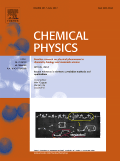
CHEMICAL PHYSICS
Connecting Researchers to the Latest Discoveries in Chemical Physics.CHEMICAL PHYSICS is a premier international journal published by Elsevier, dedicated to advancing the field of theoretical and experimental chemistry, particularly within the physical domain. Since its inception in 1973, this journal has served as a platform for disseminating cutting-edge research, fostering collaboration among researchers and professionals in the community. With a notable impact factor and recognized in the Scopus rankings, CHEMICAL PHYSICS holds esteemed positions in two categories: Q3 in Physical and Theoretical Chemistry and Q2 in Physics and Astronomy (miscellaneous). Published in the Netherlands, the journal features high-quality articles that cover a broad spectrum of topics, aiming to deepen understanding of chemical phenomena through innovative approaches. Although open access options are not currently available, the journal remains invaluable for researchers, students, and professionals seeking to stay informed about the latest developments in chemical physics. With convergence years extending from 1973 to 2025, CHEMICAL PHYSICS continues to be a significant contributor to the academic discourse in its field.

RUSSIAN CHEMICAL REVIEWS
Fostering Collaboration in the World of ChemistryRUSSIAN CHEMICAL REVIEWS, published by the esteemed ND Zelinsky Institute of Organic Chemistry, RAS, stands as a prominent platform for disseminating high-quality research in the diverse field of chemistry. With an ISSN of 0036-021X and an E-ISSN of 1468-4837, this journal has earned its place in the Q1 quartile of Chemistry (miscellaneous) for 2023, reflecting its outstanding impact and rigorous peer-review process. The journal encompasses a wide array of topics within chemistry, providing critical reviews that advance understanding and foster collaboration among researchers, professionals, and students globally. With its consistent publication since 1970, RUSSIAN CHEMICAL REVIEWS not only serves as a valuable resource for the latest advancements in the field but also plays a crucial role in shaping future research directions. The journal is based in the Russian Federation, with its office located at 47 Leninsky Pr, Moscow 119991, RUSSIA. As an essential reference for those in the chemical sciences, it provides an ideal avenue for authors looking to publish impactful reviews that contribute to the broader scientific community.
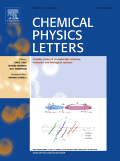
CHEMICAL PHYSICS LETTERS
Connecting Researchers to the Pulse of Chemical PhysicsCHEMICAL PHYSICS LETTERS, published by Elsevier, is a prestigious journal that has been at the forefront of advancing knowledge in the fields of physical and theoretical chemistry and physics since its inception in 1967. With an impressive impact factor reflective of its high-quality research output, this journal holds Q2 quartile rankings in both the Physical and Theoretical Chemistry and Physics and Astronomy categories for 2023. It is recognized as a key platform for disseminating groundbreaking findings, with Scopus rankings placing it within the top 76th and 66th percentiles in its respective categories. Researchers and professionals benefit from its insightful contributions and rigorous peer-review process, making it an essential resource for those engaged in cutting-edge chemical physics studies. Although the journal is not open access, it remains accessible through various institutional subscriptions, ensuring that a wide audience can explore its wealth of knowledge. Located in Amsterdam, Netherlands, the journal continues to drive innovation and collaboration across diverse scientific disciplines.

RUSSIAN CHEMICAL BULLETIN
Exploring Breakthroughs in Theoretical and Applied Chemistry.RUSSIAN CHEMICAL BULLETIN, published by SPRINGER, serves as a pivotal resource in the field of general chemistry, covering a wide array of topics that impact both theoretical and applied chemistry. With an ISSN of 1066-5285 and a presence since 1993, this journal provides a platform for disseminating significant research findings, practical applications, and novel methodologies within the broader chemistry community. While it currently holds a Q3 ranking in the Chemistry (miscellaneous) category and occupies the 230th position out of 408 in the Scopus rankings, its reputation continues to grow, fostering collaboration and innovation among researchers and professionals alike. Although the journal does not offer an open-access model, it is committed to making findings accessible within the academic community, ensuring that valuable insights can inform future research. With an anticipated convergence of studies extending to 2024, the RUSSIAN CHEMICAL BULLETIN remains an essential reference for those dedicated to advancing chemical science.

DOKLADY PHYSICAL CHEMISTRY
Exploring New Dimensions in Theoretical ChemistryDOKLADY PHYSICAL CHEMISTRY is a prominent peer-reviewed journal published by MAIK NAUKA/INTERPERIODICA/SPRINGER, focusing on advancements and research in the field of Physical and Theoretical Chemistry. With the ISSN 0012-5016 and E-ISSN 1608-3121, this journal serves as a vital platform for researchers and practitioners to disseminate their findings and insights from 1996 to the present. Despite its current Q4 ranking in the 2023 category of Physical and Theoretical Chemistry, the journal has shown significant potential for visibility and engagement within the academic community, ranking #149 out of 189 in its respective field according to Scopus metrics, highlighting its dedicated readership. While the journal is not open access, it remains an essential resource for those seeking in-depth research articles, reviews, and commentary within this dynamic discipline. As the field continues to evolve, DOKLADY PHYSICAL CHEMISTRY plays a crucial role in fostering scientific dialogue and collaboration among researchers, professionals, and students worldwide.
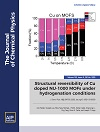
JOURNAL OF CHEMICAL PHYSICS
Exploring the Dynamics of Matter and EnergyJOURNAL OF CHEMICAL PHYSICS, published by AIP Publishing, stands as a premier scholarly source within the realms of physical and theoretical chemistry, as well as physics and astronomy. With an enduring history dating back to 1933 and converging until 2024, this journal has established itself as a cornerstone of the scientific community, evidenced by its prestigious Q1 categorization in multiple fields, including medicine and general physics. It is ranked 37th out of 243 in the general physics and astronomy category and holds a commendable 39th position in physical and theoretical chemistry according to Scopus rankings, highlighting its significant impact in these disciplines. Although not an open-access journal, it caters to a wide audience of researchers, professionals, and students seeking to deepen their understanding of the interactions and dynamics of chemical systems. With its expertly curated content, the JOURNAL OF CHEMICAL PHYSICS continues to play a vital role in advancing knowledge and fostering innovation across its core subjects.
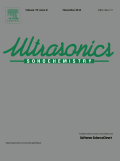
ULTRASONICS SONOCHEMISTRY
Pioneering Open Access Research in Ultrasonics and Chemical Engineering.ULTRASONICS SONOCHEMISTRY, published by ELSEVIER, is a pioneering Open Access journal that has been at the forefront of research in the fields of acoustics, ultrasonics, and their applications in chemical engineering, environmental science, and radiology since its inception in 1994. With an impressive Impact Factor and ranking amongst the top quartile journals across multiple disciplines such as Organic Chemistry, Inorganic Chemistry, and Environmental Chemistry, it serves as an essential platform for researchers and professionals seeking to disseminate their work and advance knowledge in sonochemistry and related areas. The journal's commitment to accessibility since 2021 ensures that high-quality research is openly available, thus fostering collaboration and innovation within the scientific community. As it converges into 2024, ULTRASONICS SONOCHEMISTRY continues to uphold its reputation for excellence and encourages the submission of groundbreaking studies that explore the synergistic effects of ultrasound in chemical processes.

PROGRESS IN REACTION KINETICS AND MECHANISM
Exploring the Nuances of Kinetics and MechanismsProgress in Reaction Kinetics and Mechanism is a distinguished academic journal published by SAGE Publications Ltd, focusing on the intricate dynamics of reaction kinetics and mechanisms within the field of Physical and Theoretical Chemistry. With an ISSN of 1468-6783 and an E-ISSN of 1471-406X, this journal serves as a critical platform for researchers and practitioners seeking to explore and disseminate cutting-edge findings from 1999 to 2024. Although currently not categorized as Open Access, the journal maintains a competitive profile with a Q4 categorization in its field, showcasing its commitment to fostering scientific dialogue and inquiry. The journal ranks #140 out of 189 in its category, reflecting its integral role in advancing knowledge and understanding in chemistry. Scholars, professionals, and students who aim to stay at the forefront of research in reaction kinetics will find valuable insights and findings in this esteemed publication.
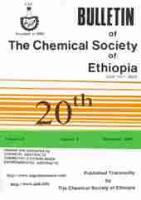
BULLETIN OF THE CHEMICAL SOCIETY OF ETHIOPIA
Illuminating the Path of Chemical Research and DevelopmentBULLETIN OF THE CHEMICAL SOCIETY OF ETHIOPIA (ISSN: 1011-3924; E-ISSN: 1726-801X), published by the Chemical Society of Ethiopia, serves as a pivotal platform for the dissemination of innovative research and developments within the field of chemistry. Since its inception in 1996 and now an open access journal since 2012, it has provided researchers, academics, and students with unrestricted access to critical studies and findings, thus fostering collaboration and the advancement of knowledge in the discipline. The journal's current standing in the Q3 quartile in the 2023 Chemistry category underlines its commitment to maintaining high academic standards, while its Scopus ranking, positioned at #250 out of 408 in general chemistry, showcases its growing influence and contribution to the scientific community. Hailing from Ethiopia and targeted toward a global readership, the journal aims to highlight local and international research, engaging scholars and practitioners alike in discussions that propel the science of chemistry forward.